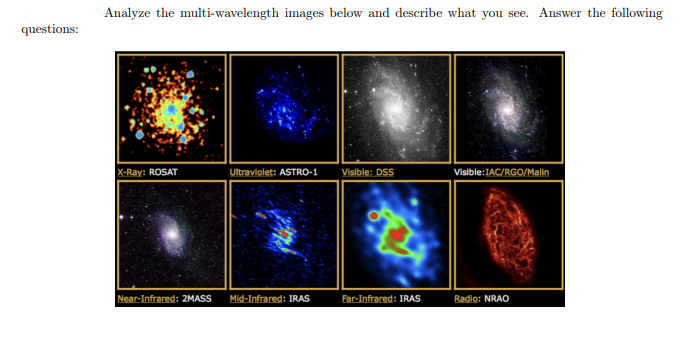1. What type of astrophysical object is imaged? 2. Where do you see the higher energy phenomena? What are they? Are they visible in any image? Why? 3. Where are the young stars? What colour do they have? Are they visible in any image? Why?
1. What type of astrophysical object is imaged? 2. Where do you see the higher energy phenomena? What are they? Are they visible in any image? Why? 3. Where are the young stars? What colour do they have? Are they visible in any image? Why?
Related questions
Question
100%
Analyze the multi-wavelength images below and describe what you see. Answer the following
questions:

Transcribed Image Text:questions:
Analyze the multi-wavelength images below and describe what you see. Answer the following
X-Ray: ROSAT
Ultraviolet:ASTRO-1 Visible: DSS
Near-Infrared: 2MASS Mid-Infrared: IRAS
Far-Infrared: IRAS
Visible:IAC/RGO/Malin
Radio: NRAO

Transcribed Image Text:1. What type of astrophysical object is imaged?
2. Where do you see the higher energy phenomena? What are they? Are they visible in any image? Why?
3. Where are the young stars? What colour do they have? Are they visible in any image? Why?
4. Where are the old stars? What colour do they have? Are they visible in any image? Why?
5. What is responsible for the emission observed in the Far-Infrared image? Briefly explain why we observe
this emission.
Expert Solution
This question has been solved!
Explore an expertly crafted, step-by-step solution for a thorough understanding of key concepts.
Step by step
Solved in 2 steps
